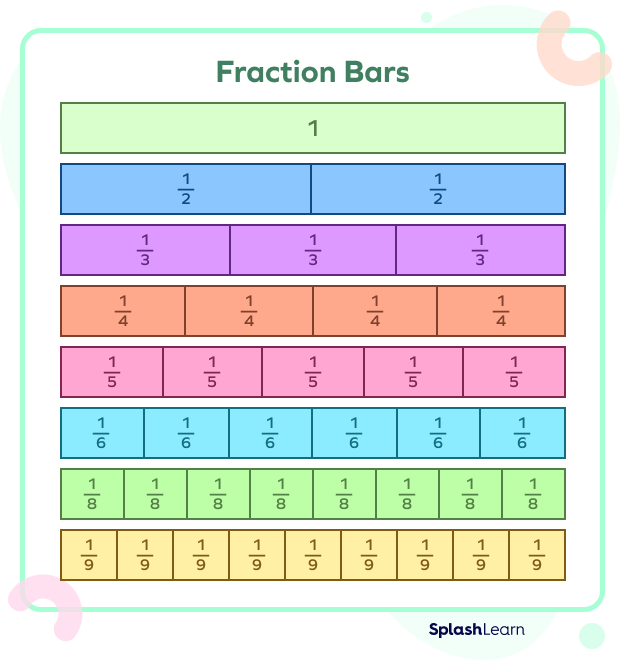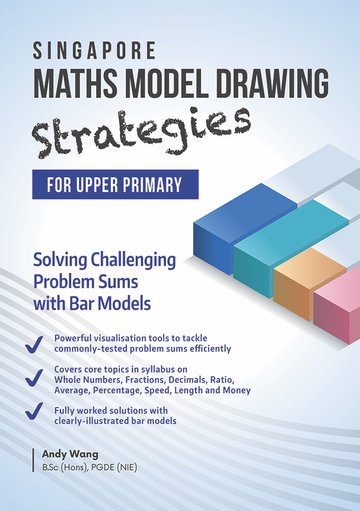How bar model drawing techniques enhance overall math performance
Wiki Article
Exploring Bar Model Illustration Techniques: A Comprehensive Guide to Picturing Mathematics Concepts
Bar version attracting methods act as a valuable source for both teachers and trainees in picturing mathematical ideas. These models simplify complex numerical relationships, helping in the understanding of addition, reproduction, department, and reduction. This guide outlines efficient techniques for applying bar models, cultivating active engagement and real-world links. As viewers check out the functional applications and teaching ideas, they will certainly reveal how these methods can transform their technique to maths.Comprehending the Basics of Bar Model Drawing
Bar version attracting offers as a powerful visual device in mathematics, promoting the understanding of mathematical relationships and analytical strategies. This strategy entails standing for numbers and their connections through rectangular bars, making it much easier to visualize operations such as addition, division, subtraction, and reproduction. Each bar's size represents a particular value, allowing students to contrast quantities and understand proportions clearly.To produce a bar design, one starts by determining the trouble's crucial elements, frequently simplifying right into parts that can be aesthetically stood for. In an easy addition issue, two bars can be drawn, with their lengths standing for the addends. The combined size illustrates the amount. Furthermore, bar versions can be adjusted for extra complicated issues, consisting of ratios and portions, by adjusting benches accordingly. Understanding these fundamentals lays a strong structure for efficient analytical and deeper mathematical understanding.
Advantages of Utilizing Bar Versions in Math
Utilizing bar designs in maths provides countless advantages that enhance learning and comprehension. These aesthetic representations help students in grasping complicated concepts by breaking them down right into convenient components. Bar versions supply a clear structure for showing connections between numbers, making abstract ideas a lot more concrete. They promote a much deeper understanding of mathematical procedures and promote analytic by enabling students to visualize the data they are dealing with.Bar models support the advancement of important assuming skills, as students must evaluate and analyze the aesthetic details to draw final thoughts. This method encourages active involvement with the product, strengthening retention and mastery of mathematical concepts. By promoting a strong structure in visual proficiency, bar versions equip students to approach different mathematical challenges with self-confidence. Generally, the integration of bar designs into mathematics education and learning confirms useful in cultivating both comprehension and logical capacities amongst trainees.
Applying Bar Models to Addition and Reduction
Bar models act as a reliable tool for visually representing enhancement and reduction issues. By highlighting the partnership in between numbers, they improve understanding and help with analytical. On top of that, real-life applications of these designs can aid students realize mathematical ideas in useful contexts.Standing For Addition Visually
Aesthetic aids can considerably boost their understanding of these operations when students run into addition and reduction troubles. Bar designs function as efficient tools for standing for addition. By separating a rectangle right into sectors that match to the numbers included, trainees can visualize the relationship between the amounts. If a student needs to include 3 and 5, they can produce a bar separated into two sections: one area standing for 3 and the other representing 5. This clear representation not just streamlines the enhancement process however additionally strengthens the principle of integrating amounts. As trainees adjust these visual help, they establish a much deeper comprehension of addition, resulting in improved analytic abilities and greater self-confidence in their mathematical capacities.
Reduction With Bar Designs
Subtraction is frequently viewed as a much more intricate procedure than enhancement, bar versions can efficiently clarify this process for trainees. By visually representing the quantities entailed, students can better comprehend how numbers associate with each other. In a bar model for reduction, one bar stands for the overall, while an additional shows the amount being deducted. This aesthetic distinction assists pupils comprehend the principle of "removing." If a bar reveals 10 devices, and an additional bar standing for 4 systems is gotten rid of, pupils can quickly see that 6 devices stay. This technique not just promotes understanding of reduction yet additionally help in developing problem-solving abilities, enabling trainees to visualize their mathematical reasoning and improve their total comprehension of mathematical concepts.Real-Life Application Instances
Comprehending reduction via bar versions lays a foundation for using these methods in real-life scenarios. In numerous contexts, such as budgeting or buying, individuals can picture just how much cash continues to be after expenditures. If a person has $50 and invests $20, a bar model can stand for the complete quantity and the spent portion, highlighting that $30 is left. Additionally, moms and dads can utilize bar models to aid youngsters understand the amount of even more items need to be included to complete a set, such as having three apples and needing five. This graph simplifies intricate troubles, helping with comprehension and retention. Eventually, bar designs function as reliable tools in everyday decision-making, improving mathematical understanding in useful situations.Picturing Reproduction and Division With Bar Versions
In checking out the application of bar versions for multiplication and department, it is important to understand their foundational principles. Constructing multiplication versions permits students to envision relationships between numbers, while efficient department strategies can be illustrated through these visual aids. This method improves comprehension and analytical skills in mathematics.Comprehending Bar Versions
Bar versions function as an effective visual device for showing the concepts of reproduction and department. They allow students to stand for mathematical partnerships in an organized layout, facilitating a deeper understanding of these operations. In multiplication, bar designs show groups of equivalent dimension, permitting people to imagine the overall amount when combining these teams. Alternatively, in department, bar designs assist portray exactly how a total is divided into smaller, equal components, clearing up the principle of dividing. By using these aesthetic help, pupils can understand the underlying concepts of multiplication and department better. This approach not only enhances comprehension but also sustains problem-solving skills, making bar designs an important possession in mathematical education and learning.Creating Multiplication Models
Constructing reproduction designs using bar layouts provides a clear approach for envisioning the procedure of multiplication. These versions allow students to stand for reproduction as teams of equivalent components, making abstract concepts extra concrete. As an example, to highlight (3 times 4), a trainee can attract one bar split into three equal segments, each representing 4 devices. Additionally, developing a second bar with the exact same length enhances the understanding of repeated enhancement, as each segment represents one team. This aesthetic representation not only aids in comprehending reproduction yet likewise improves analytic skills. By employing bar models, students can much better comprehend partnerships between numbers and create a durable structure for much more intricate mathematical principles, resulting in boosted self-confidence in their capacities.Imagining Department Approaches

Fixing Word Issues Utilizing Bar Design Techniques

As an example, in a trouble including enhancement and subtraction, students can draw separate bars for each quantity and afterwards adjust them to discover the option. This procedure not only clarifies the trouble but additionally promotes a deeper theoretical understanding. Bar models can be adjusted for different types of word troubles, making them versatile across various mathematical topics. Ultimately, using bar models can substantially improve students' analytical abilities by supplying a clear aesthetic path to reach the correct solution.
Integrating Bar Models in Various Math Topics
Bar models can be flawlessly incorporated into different mathematics topics, boosting students' understanding of ideas beyond standard arithmetic. In algebra, these visual devices aid in standing for equations and inequalities, enabling learners to visualize connections between variables. When dealing with geometry, bar models can show the buildings of shapes and spatial thinking, aiding students comprehend principles like area and boundary effectively. In stats, bar versions assist in the analysis of data sets, enabling pupils to compare quantities and acknowledge fads visually. Additionally, incorporating bar versions within measurement topics aids in recognizing devices and conversions by offering a concrete depiction of amounts. By using bar designs throughout various mathematical areas, educators can cultivate a much deeper comprehension of complicated concepts, thus enhancing problem-solving abilities and advertising vital thinking (bar model drawing techniques). This convenience shows the utility of bar versions as a fundamental tool for trainees in their mathematical journeyTips for Mentor Bar Versions Successfully
Integrating bar designs right into training techniques calls for thoughtful approaches to optimize their effectiveness. Educators ought to start by introducing bar designs with simple, relatable examples that students can conveniently comprehend. This aids to construct self-confidence and knowledge with the concept. Gradually raising the intricacy of issues permits students to apply their skills considerably. Additionally, teachers should urge students to develop their own bar models, promoting energetic interaction and ownership of their knowing.Including collaborative tasks can also enhance understanding, as trainees review and resolve troubles in teams. Continuous comments is essential; educators ought to offer useful discourse on students' bar version representations to direct enhancement. Attaching bar models to real-life circumstances enhances their importance, aiding trainees see the functional applications of their mathematical abilities. By carrying out these methods, educators can effectively harness the power of bar models in their maths direction.
Regularly Asked Questions
Can Bar Versions Be Made Use Of in Other Topics Besides Math?
Bar versions can certainly be made use of in different subjects beyond math. They efficiently show principles in science, social studies, and language arts, helping to aesthetically represent connections, processes, and concepts for enhanced understanding throughout techniques.What Age Group Is Best Fit for Discovering Bar Designs?
Bar designs are best matched for kids ages 7 to 12, as they develop concrete thinking abilities throughout this duration (bar model drawing techniques). At this age, trainees can effectively comprehend abstract concepts via graph and analytical methodsAre There Digital Devices for Creating Bar Models?

How Can I Analyze Trainee Understanding of Bar Versions?
Examining student understanding of bar models can include quizzes, empirical assessments, and team discussions. Educators may likewise analyze pupils' completed models and their capacity to discuss their thinking, making sure a detailed examination of comprehension.What Prevail Mistakes When Utilizing Bar Models?
Typical mistakes when making use of bar designs include misstating amounts, stopping working to accurately label bars, confusing addition and subtraction, ignoring to utilize consistent ranges, and neglecting the importance of clear visual splitting up between different elements.In addition, bar versions can be adapted for a lot more complex issues, consisting of ratios and portions, by readjusting the bars accordingly. Reduction is often viewed as an extra complicated operation than enhancement, bar models can successfully clarify this procedure for students. In a bar design for subtraction, one bar stands for the total, while one more suggests the quantity being subtracted. If a bar shows 10 systems, and one more bar standing for 4 devices is gotten rid of, pupils can conveniently see that 6 units remain. When dividing a total amount into equal groups, students can draw a lengthy click here bar to stand for the whole and then segment it right into smaller bars that indicate each group.
Report this wiki page